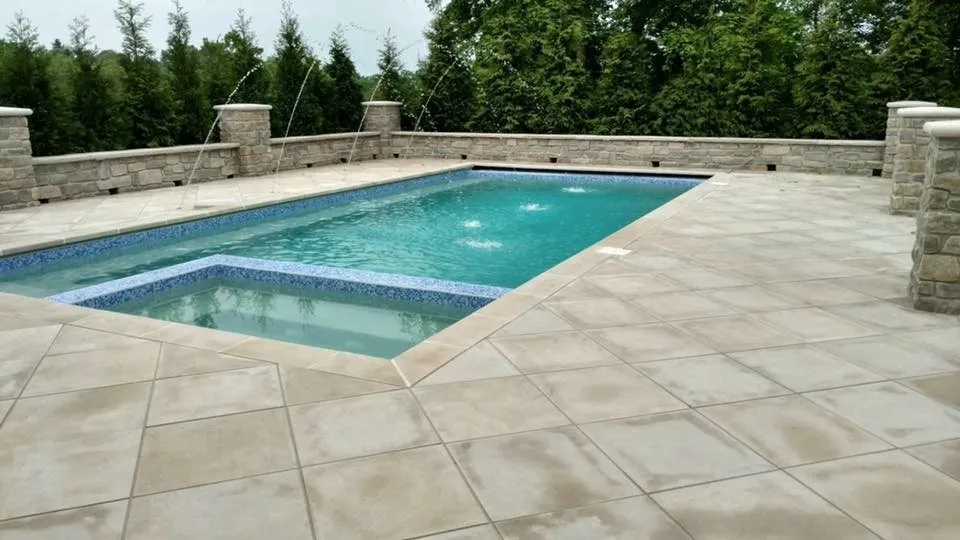When it comes to transforming your outdoor spaces, few materials can match the timeless elegance and durability of limestone pavers. Whether you’re looking to create a stunning patio, a charming garden path, or a robust driveway, limestone pavers offer a versatile and aesthetically pleasing solution.
In this article, we’ll explore everything you need to know about limestone pavers, from their benefits and types to installation and maintenance tips.
What Are Limestone Pavers?
Limestone pavers are natural stone tiles cut from limestone, a sedimentary rock composed primarily of calcium carbonate. These pavers are known for their unique texture, subtle color variations, and natural beauty. They are commonly used in outdoor landscaping projects due to their durability and ability to withstand various weather conditions.
Benefits of Limestone Pavers
- Durability: Limestone is a robust material that can endure heavy foot traffic and harsh weather conditions, making it ideal for outdoor use.
- Aesthetic Appeal: The natural beauty of limestone, with its subtle color variations and textures, adds a touch of elegance to any outdoor space.
- Versatility: Limestone pavers come in various shapes, sizes, and finishes, allowing for endless design possibilities.
- Low Maintenance: Limestone is relatively easy to maintain, requiring only periodic cleaning and sealing to preserve its appearance.
- Eco-Friendly: As a natural material, limestone is an environmentally friendly choice for sustainable landscaping.
Types of Limestone Pavers
Limestone pavers are available in several types, each offering unique characteristics and benefits. Here are some popular options:
1. Tumbled Limestone Pavers
Tumbled limestone pavers have a weathered, rustic appearance, achieved through a tumbling process that softens the edges and gives the stone an aged look. These pavers are perfect for creating a vintage or Mediterranean-style outdoor space.
2. Honed Limestone Pavers
Honed limestone pavers have a smooth, matte finish, achieved by grinding the surface of the stone. This type of paver is ideal for modern and contemporary designs, offering a sleek and polished look.
3. Brushed Limestone Pavers
Brushed limestone pavers feature a textured surface, created by brushing the stone with a stiff wire brush. This finish enhances the natural texture of the limestone, providing a slip-resistant surface that is perfect for pool decks and walkways.
4. Sawn Limestone Pavers
Sawn limestone pavers have a smooth, flat surface, cut with a diamond saw. These pavers are known for their precision and uniformity, making them suitable for formal and geometric designs.
How to Choose the Right Limestone Pavers
Selecting the right limestone pavers for your project involves considering several factors:
1. Color and Finish
Limestone pavers come in a range of colors, from soft beige and cream to warm brown and gray. Choose a color that complements your outdoor space and matches your design aesthetic. Additionally, consider the finish—whether you prefer a rustic, tumbled look or a sleek, honed finish.
2. Size and Shape
Limestone pavers are available in various sizes and shapes, including square, rectangular, and irregular shapes. Consider the scale of your project and the desired pattern when selecting the size and shape of your pavers.
3. Thickness
The thickness of limestone pavers can vary, typically ranging from 20mm to 50mm. Thicker pavers are more durable and suitable for high-traffic areas, while thinner pavers are ideal for decorative purposes.
4. Texture
The texture of limestone pavers can affect both the appearance and functionality of your outdoor space. For example, brushed or tumbled pavers provide better slip resistance, making them ideal for pool decks and walkways.
Installation of Limestone Pavers
Proper installation is crucial to ensure the longevity and performance of your limestone pavers. Here’s a step-by-step guide to installing limestone pavers:
Step 1: Planning and Preparation
Before you begin, plan your project by measuring the area and determining the quantity of pavers needed. Prepare the site by clearing any debris, vegetation, or existing paving.
Step 2: Excavation and Base Preparation
Excavate the area to a depth of about 150-200mm, depending on the thickness of your pavers. Create a stable base by laying a layer of compacted road base or crushed rock, ensuring it is level and well-compacted.
Step 3: Laying the Pavers
Start laying the limestone pavers from one corner, working your way outwards. Use spacers to maintain consistent gaps between the pavers for jointing material. Cut pavers as needed to fit the edges and corners.
Step 4: Jointing and Sealing
Once all pavers are laid, fill the joints with fine sand or polymeric sand, sweeping it into the gaps and compacting it with a plate compactor. Finally, apply a sealer to protect the pavers from stains and weathering.
Step 5: Finishing Touches
Clean the surface of the pavers to remove any excess sand or debris. Allow the sealer to dry completely before using the area.
Maintenance of Limestone Pavers
To keep your limestone pavers looking their best, follow these maintenance tips:
1. Regular Cleaning
Sweep the pavers regularly to remove dirt and debris. For deeper cleaning, use a mild detergent and water, scrubbing the surface with a stiff brush. Avoid using acidic or abrasive cleaners, as they can damage the stone.
2. Sealing
Apply a high-quality sealer every 1-2 years to protect the pavers from stains, moisture, and UV damage. Sealing also enhances the color and texture of the limestone.
3. Stain Removal
Address spills and stains promptly to prevent them from setting into the stone. Use a poultice or specialized stone cleaner for stubborn stains.
4. Weed Control
Keep an eye out for weeds growing between the pavers. Remove them manually or use a weed killer specifically designed for use on natural stone.
Conclusion
Limestone pavers are a fantastic choice for enhancing your outdoor spaces, offering a perfect blend of beauty, durability, and versatility. Whether you’re creating a cozy patio, a grand driveway, or a serene garden path, limestone pavers can transform your vision into reality. By choosing the right type of pavers, following proper installation techniques, and maintaining them regularly, you can enjoy the timeless appeal of limestone for years to come.
